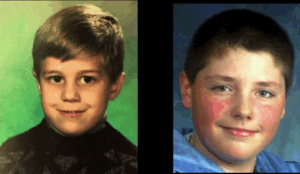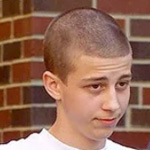
On March 24, 1998, a quiet Tuesday afternoon in Jonesboro, Arkansas turned into a scene of calculated slaughter. At Westside Middle School, students and teachers filed outside for what they thought was a routine fire drill. What followed was anything but routine.
From the edge of the woods just 100 yards away, two students—Mitchell Johnson, age 13, and Andrew Golden, age 11—waited in camouflage armed to the teeth. Earlier that morning they had broken into the home of Golden’s grandfather, a wildlife officer, and stolen a small arsenal: seven handguns, three rifles, and hundreds of rounds of varied caliber ammunition. In all, they brought ten firearms to the ambush site. The boys had prepared for the assault like soldiers deploying to a battlefield. Their positions were strategic and their aim was precise. The first shot cracked the air. Then another. Panic followed.
By the time the shooting stopped, five people were dead: four female students and a teacher, Shannon Wright, who died shielding a sixth grader from gunfire. Ten others were wounded. The massacre lasted only moments, but it left an entire town staggered.
What made the Jonesboro shooting particularly strange was not only the youth of the assailants, but the oddly distant nature of their relationship. Though the media initially reported that Mitchell and Andrew were cousins, this was said to have been a mistake. They were not friends. They never visited each other’s homes. Teachers and classmates only saw them together on occasion on the bus. It was as if two separate orbits had briefly crossed paths with devastating consequence. That lack of visible bond raised questions of how two boys who barely interacted could forge a conspiracy so complex and so cruel.
Their legal fates were shaped by their ages. Too young to be tried as adults under Arkansas law, the boys were sentenced to confinement until age 21, the maximum allowable. They served time in juvenile detention, with both later reoffending after release. The law had no mechanism to hold them beyond their youth. The public, particularly the families of the dead, found that incomprehensible. In 2019, at the age of 33, Andrew Golden died in a head-on car crash.
The attack at Westside was more than a tragedy. It was a calculated betrayal, executed by children who should have been learning vocabulary and long division. Instead, they orchestrated one of the earliest mass school shootings in American history. And behind it all, behind the bullets and the bodies, lingered the unanswered question—how could two boys so unconnected by friendship or family come together for something so unthinkably cruel?
No one has ever found a satisfying answer.
Additional Content:



Leave a Comment